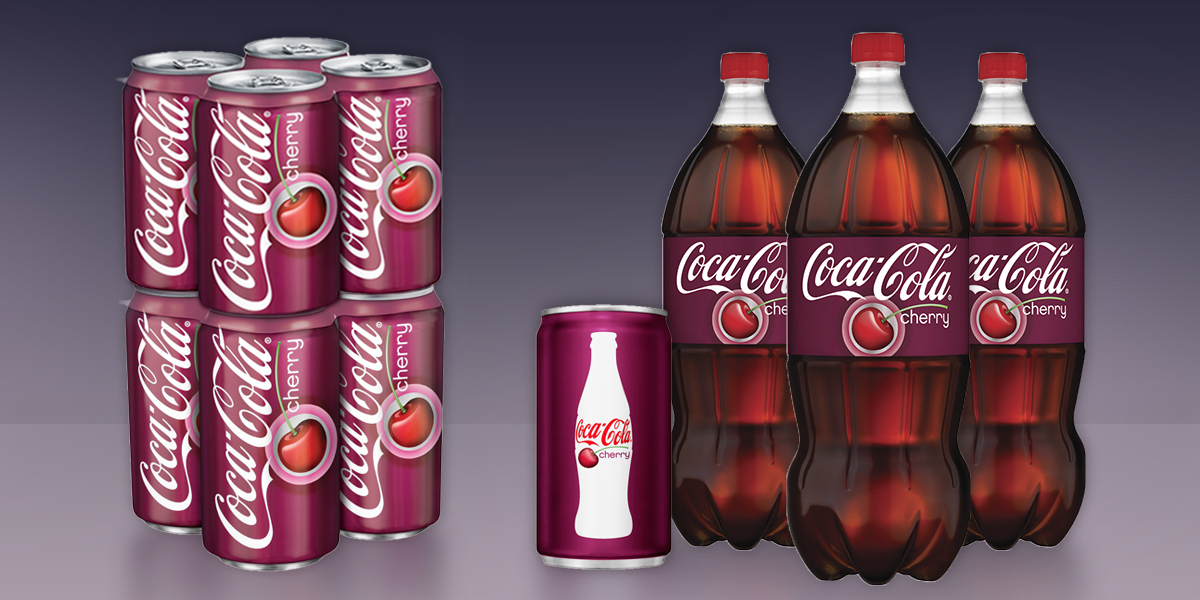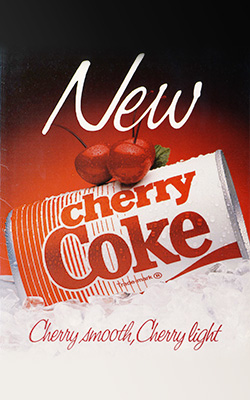
Three Decades of the Timeless Taste of Cherry Coke
Excitement hasn't waned in 30 years for this cherry-flavored favorite

Thirty years ago, Cherry Coke debuted in bottles and cans, giving retailers and foodservice operators a novel new choice for their customers. Since that time, the turn-of-the century soda fountain favorite has held its own in the realm of what one early Cherry Coke TV commercial called "a timeless taste" — and sales for what was an instant hit are still going strong. Cherry-flavored Coke products continue to show healthy year-over-year growth. According to a Coca-Cola brand manager, the cherry cola segment in general is up 4.4% in volume over the last five years.
The Coca-Cola Company has seen a 2.4% growth in volume in the segment. In terms of dollars, the segment as a whole has grown by 6.7%. The Coca-Cola Company has seen an 8.1% growth.
Cherry Coke launched in early 1985 in select U.S. cities and rolled out nationwide that summer. It was "the first major entry into a whole new category: cherry-flavored sodas," Brian Dyson, president of Coca-Cola USA, told The Coca-Cola Bottler at the time. The release of what one Atlanta Constitution contributor called "a wonderful memory" came after years of research and development, consumer testing at the 1982 World's Fair, and thousands of requests from thirsty Americans for cherry-flavored Coke. Just 10 weeks after its debut, the Cherry Coke brand had a consumer awareness level of 91%.
The brand represented the first flavored extension of the company's flagship trademark, and reception was strong. According to bottlers in test markets at the time, acceptance of the new product by both consumers and the trade was "phenomenal." Building on that initial energy, The Coca-Cola Company introduced Diet Cherry Coke to the U.S. market in 1986. By the end of that year, Cherry Coke was positioned No. 10 among all soft drink products, held a 3.5 share of the sugar cola market and a 1.7 share of total soft drink market.
Mike Perkis, director of corporate marketing for Coca-Cola Bottling Co. Consolidated in Charlotte, North Carolina, reported that initial results were three times original projections, adding that "Cherry Coke now makes up 6% of our total cola sales," according to a report in The Coca-Cola Bottler.
In that same story, Jerry Nelson, of Wichita Coca-Cola Bottling Company in Colorado Springs, Colorado, said, "I've never seen such excitement for a new product."

In 1990, Coca-Cola announced the rollout of a new "fountain-style" Cherry Coke and Diet Cherry Coke with more cherry taste — closer to what people remembered from the soda fountain. Cherry Coke Zero came to market in 2005 in response to men's attitudes about diet drinks. Cherry-flavored Coke products are now sold in 36 countries.
Originally, the target audience for Cherry Coke was "adventurous consumers of all ages." In 1987, young people ages 8 to 19 accounted for 46.3% of sales volume. Marketing efforts in the 1990s were heavily geared toward teenagers, and the brand still represents an opportunity for retailers and foodservice providers to recruit young people. Families are also buying more Cherry Coke products — particularly families in the American heartland. Retailers trying to increase basket size should take note that in terms of dollars, shopper baskets are 53% greater than when cherry cola is not in the basket, according to a Coca-Cola brand manager.
What's become clear over the years is this: People love Cherry Coke. From its start, the brand grew organically. It found an early following and continues to attract both youthful consumers and those who are old enough to remember fondly the old-fashioned soda fountain favorite for 30 years.
Here's to another three delicious decades.
Read Related Stories:
Coca-Cola® History
Diet Coke® Through the Years